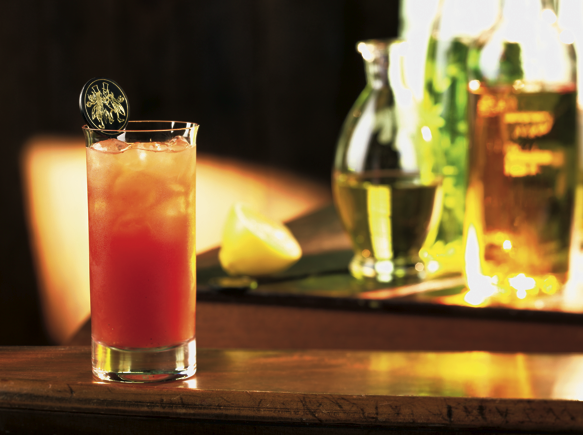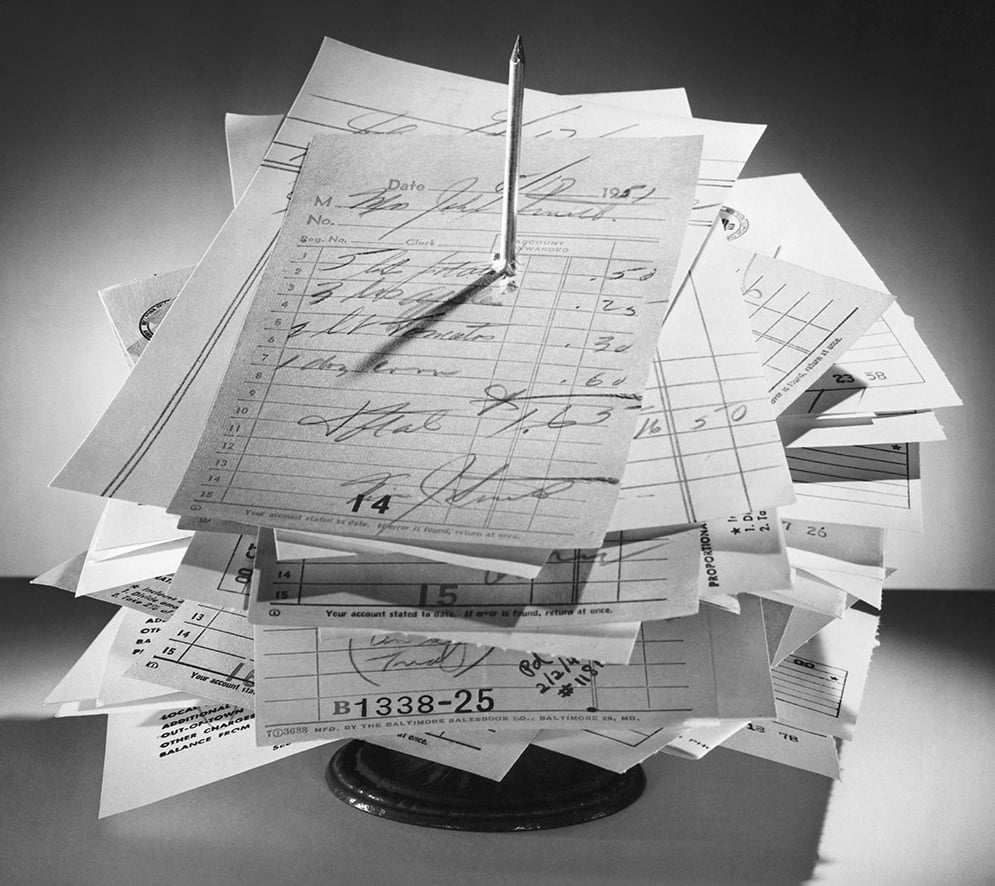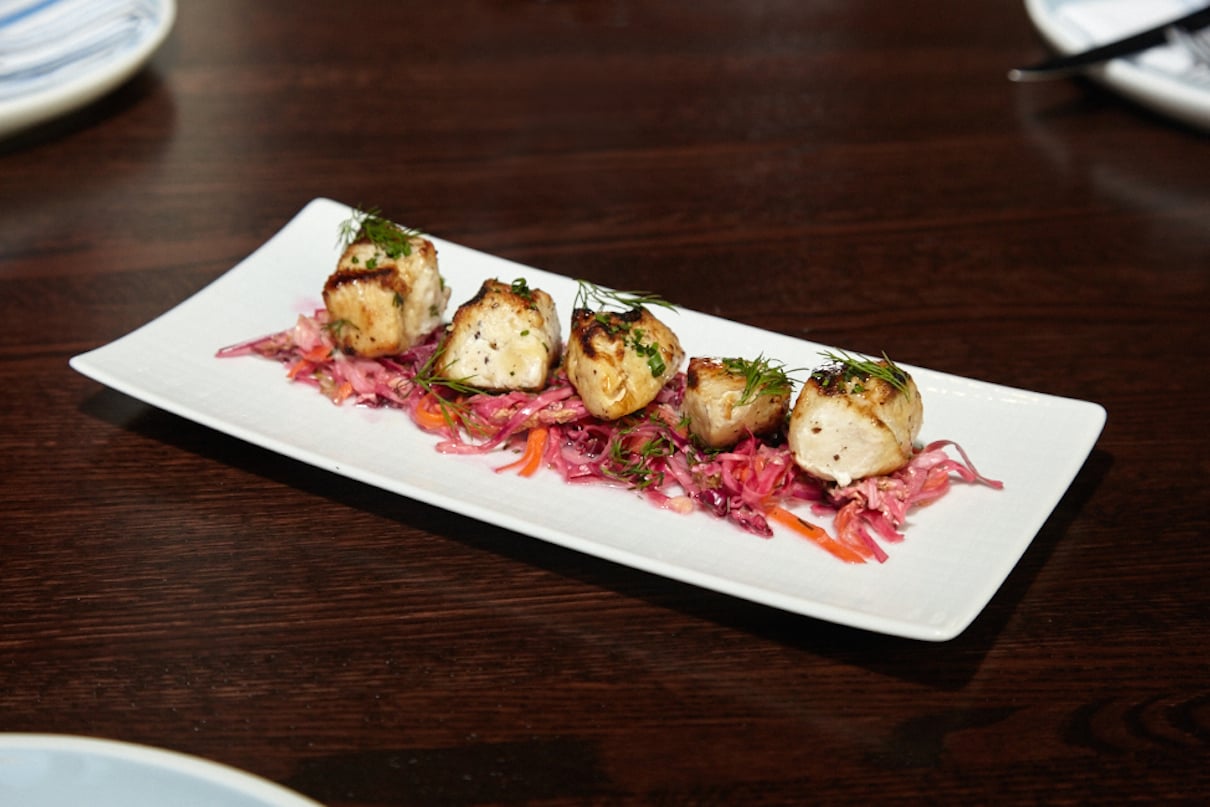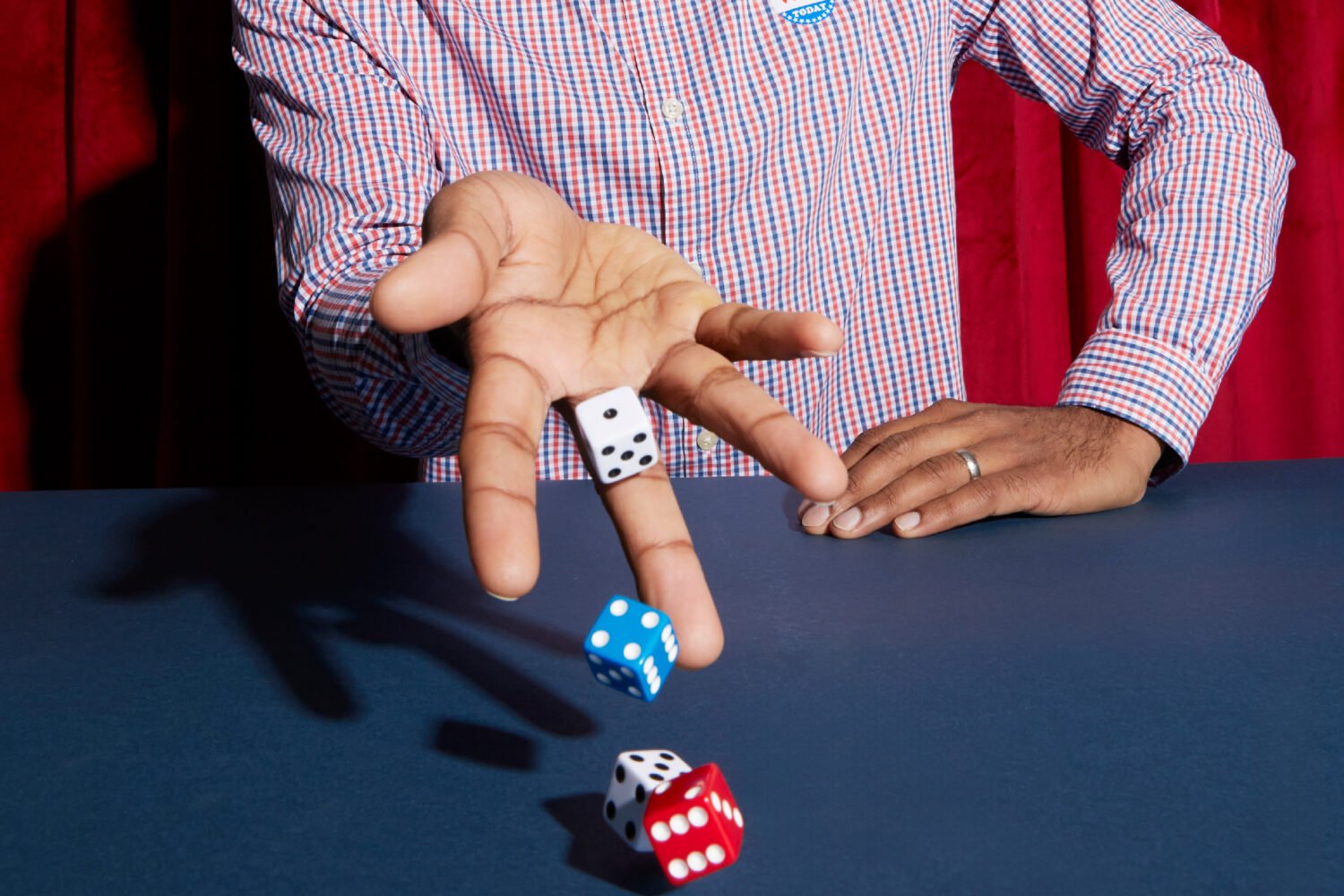Duncan MacElhone graduated from Georgetown University in 1977 and returned to his native Paris, where he began a career in investment banking. Although he achieved early success, his stint in the financial world lasted barely a dozen years. Blame it on the family business: His grandfather, a Scot named Harry MacElhone, was the Harry of Harry’s New York Bar, a Paris institution at 5 rue Daunou that claimed to be Europe’s first dispensary of cocktails.
Opened in 1911 by a well-known American jockey in Paris named Tod Sloan, it was purchased by MacElhone in the 1920s and became one of the most famous bars in the world in 1926, when it was one of the watering holes named in Ernest Hemingway’s The Sun Also Rises. In time it became known simply as Harry’s Bar.
The place was a magnet for Americans who traveled to Paris for a respite from Prohibition’s bathtub gin. The free-flowing booze of Gay Paree in the 1920s also attracted students from the Ivy League and other universities, a reason college pennants are as much a part of the decor at Harry’s as the frankfurter steamer on the bar that bears the legend chiens chauds à tout les heures (“hot dogs at all hours”).
In the early 1980s, the newest pennant on the wall was a gray triangle emblazoned with georgetown above the bar’s chrome-plated National cash register. Andy MacElhone, the son and successor of the departed Harry, was fond of telling customers that he had installed the pennant there to remind him how much he had paid for son Duncan’s college tuition.
Andy MacElhone was a gentleman of leisure first, owner of a famous bar second. Just about every day at noon, you could find him on the customer side of the bar, dressed in a boldly patterned tweed jacket. He looked as though he were either going to the racetrack or returning from it. His son, Duncan, often could be found at Harry’s even before he began helping run the place full-time in 1988.
Throughout the 1980s, I counted Andy and Duncan MacElhone as friends. Whenever I was in Paris, I would stop by Harry’s Bar for a prelunch aperitif and chat about restaurants with the MacElhones. Duncan and I took turns treating each other to at least one lunch per trip.
At one lunch I asked why he had left a career in investment banking to become frontman for a saloon. It was simple, he said. Harry’s Bar was a living repository of the history of drinking in Paris in the 20th century: It had opened three years before the First World War; it had hosted literary giants, from Ernest Hemingway and F. Scott Fitzgerald to Jean-Paul Sartre and Simone de Beauvoir; and it had survived the German occupation of World War II to flourish through the rest of the 20th century.
It also had managed to maintain the dual personality it had from its earliest days: a sedate neighborhood bar during the day—a place for modulated conversations and contemplative drinking—and a boisterous saloon in the evening thanks to the hordes of American tourists drawn to “sank roo doe noo,” the phonetic spelling of its address.
Duncan, a businessman/scholar proud of his signed first editions of Hemingway’s books, was the perfect curator for the kinetic museum that was Harry’s New York Bar. He could recite the name of every writer and artist who had bent an elbow at the place, from Ezra Pound and Man Ray to James Jones and Simone Signoret. And while MacElhone was quick to confirm that F. Scott Fitzgerald and wife Zelda were ejected more than once because they were insolent before they were drunk, he was adamant about debunking a self-serving tale perpetuated by Ernest Hemingway.
As recounted in A.E. Hotchner’s Papa Hemingway: The Ecstasy and Sorrow, Papa told Hotch this story during a visit to Harry’s Bar in 1950: It seemed a former welterweight boxer arrived at the bar with a lion on a leash. The lion was mannerly, but midway through the boxer’s drink, the lion defecated. Anybody who has walked by an uncleaned lion cage at a circus will understand why Harry MacElhone was soon standing behind an empty bar.
The boxer showed up again the next day with his lion, and the incident was repeated. The next day, when the boxer and his pet arrived, Hemingway—who had been present the previous two days—first threw the pugilist out, then dragged the lion out by his mane. Hotchner quotes Hemingway as saying, “Out on the sidewalk the lion gave me a look, but he went quietly.”
It’s a good story, one that burnished the legend of Harry’s Bar, but according to Andy and Duncan MacElhone, it never happened. Hotchner could not be blamed—he was merely Hemingway’s Boswell, recording the great man’s pronouncements. But Duncan was so vocal in giving the lie to the tale that Hotchner never returned to Harry’s Bar.
Harry’s has a reasonably good claim to being the first cocktail bar in Europe. It’s the birthplace of one of the great classic cocktails, the sidecar—a shaken mixture of Triple Sec, Cognac, and lemon juice strained into a cocktail glass that was created by Harry MacElhone in 1931. Also invented at Harry’s Bar was a now-familiar tall drink, served in a highball glass, that was credited with having restorative powers.
The Bloody Mary was created in 1921 by bartender Pete Petiot as an “eye opener,” a type of drink concocted by bartenders to soothe hangovers. Whether Petiot’s original mixture of the juice of half a lemon, salt, cayenne pepper, black pepper, Worcestershire sauce, vodka, and tomato juice is a curative depends on the opinion of the overimbiber. What is beyond question is that a properly mixed Bloody Mary is a delicious drink.
When the ingredients are combined in the right proportions, a marvelous balance of flavors is achieved. That’s the genius of the Bloody Mary. With two ounces of vodka, the drink has a definite alcoholic punch, intended to tranquilize morning-after jitters. But the queasiness that alcohol often triggers in a hangover victim is countered by the lemon, the spices, and the sweet/acid taste of the tomato juice.
The Virgin Mary—a Bloody Mary without the vodka—is dismissed by die-hard drinkers as a “bloody shame.” Not so: If the raw, alcoholic edge of the vodka is absent in a perfectly made Bloody Mary, a Virgin Mary that faithfully adheres to the original Harry’s Bar formula is a very good drink that lacks only the alcoholic punch.
No recipe is given for a Bloody Mary in the authoritative Old Mr. Boston Official Bartender’s Guide first published in 1935. I have a second printing, dated March 1935, in which the book’s original owner penciled in, between “Blue Blazer” and “Blue Devil Cocktail,” Petiot’s Bloody Mary formula.
The Bloody Mary didn’t become a standard until the 1950s. The Heublein Company began promoting its domestically distilled Smirnoff vodka in the late 1940s, but it took years of promotion before the clear spirit found space in home liquor cabinets.
Vodka’s eventual popularity was propelled by two things. The first was a captivating ad that appeared in the early 1960s in the New Yorker promoting Wolfschmidt vodka. It featured the head of a Russian wolfhound, its muzzle tied shut with a bandanna, and this caption: “Wolfschmidt: It leaves you breathless.” The message, quickly to become an urban myth, was that vodka would not the telltale smell of liquor on the breath.
The second was that vodka, legally defined as a “neutral grain spirit,” has only the flavor of alcohol. Consumers who didn’t like the flavor of other spirits found vodka ideal: Mix it with orange or grapefruit juice or hide it in the depths of a Bloody Mary, and you could enjoy the narcotic effects of alcohol without suffering the taste of spirits.
The first change to the Bloody Mary formula came in the early 1950s, when Tabasco sauce began being exported to France. The pinch of cayenne pepper in Petiot’s original recipe was replaced by three dashes of Tabasco in the revised edition of Harry’s ABC of Mixing Cocktails.
Subsequent changes have been to the detriment of the drink, a fact that Andy MacElhone was aware of. In a 1980s edition of the bar’s recipe book, at the end of the Bloody Mary formula, he adds the admonition “. . . above all no celery salt.”
The powdered celery seed in celery salt is a brash intrusion that disturbs the balance of a Bloody Mary. Even worse are coarse-ground black pepper, which lends grittiness, and prepared horeseradish, which transforms a smooth-textured Bloody Mary into rough-textured swill. Other sins include the mercifully rare addition of clam juice and the common inclusion of beef bouillon, the latter an attempt perhaps to combine a Bloody Mary with a bull shot—a mixture of beef bouillon and vodka seasoned with salt, pepper, Tabasco, and Worcestershire. It more properly be called a bloody bull shot.
Duncan MacElhone attended Georgetown University during the golden age of the Washington saloon. It began with the legalization of the standup bar for the first time since Prohibition and the opening of Clyde’s, the District’s first upscale saloon, in Georgetown in 1963.
It may have been a golden age of saloons, but it was the dark ages for the Bloody Mary in DC. During our Paris conversations, Duncan said he’d been appalled by what was served in Washington saloons during his years at Georgetown. The only place he encountered an authentic Bloody Mary was at the original Duke Zeibert’s. The barman who mixed it was Mac MacNamara, a sergeant major in the Marine Corps during World War II, who assembled each Bloody Mary to order—no premixed base—even when drinkers were three deep at the bar.
Years later, when I reminded Duncan of Mac MacNamara’s Bloody Marys, he asked me to deliver to Mac an inscribed copy of Harry’s ABC of Mixing Cocktails. I did so at Gary’s, a fine steakhouse where Mac tended bar at lunch after Duke’s closed.
In the spring of 1998, while practicing my morning ritual of skimming the obituaries in the Washington Post, I was stunned to find Duncan MacElhone profiled among the deceased. At age 44, he had died of a liver ailment following surgery at a Paris hospital.
The curator of Harry’s Bar—the debunker of myths about the doings of the artists who had imbibed there for most of the 20th century—was gone. Gone too was the uncompromising defender of Pete Petiot’s original Bloody Mary.
In 1989, over one of our lunches in Paris, I had told Duncan of my intention to write a story on the Bloody Mary. Ten years after his untimely departure, I finally got around to doing it. Duncan MacElhone: Here’s looking at you, kid.
A Sampling of Bloody Marys Around Washington
Sit at a bar and order a classic cocktail or tall mixed drink, and you expect to be served something approaching the standard recipe. Order a Manhattan and you expect a mixture of whiskey, sweet vermouth, and a couple of dashes of Angostura bitters, strained into a cocktail glass and garnished with a maraschino cherry. Order a sidecar and you expect equal parts Triple Sec, brandy, and lemon juice shaken with ice and strained into a cocktail glass.
So why is the Bloody Mary, which merits a place on any list of great mixed drinks, so frequently served at variance with its classic formulation? I wish I knew.
For a frame of reference, here is the recipe for the authentic Bloody Mary served at Harry’s New York Bar in Paris:
“In shaker or directly in large tumbler: ice, 6 dashes of Worcestershire Sauce, 3 dashes of Tabasco, pinch of salt, pinch of pepper, juice of ½ lemon, 2 ounces of vodka, fill remainder of glass with top-quality tomato juice, and above all no celery salt.”
Leave out the vodka and you will enjoy a Virgin Mary that nobody with a sense of taste would call a bloody shame.
The Best
The Dubliner (Phoenix Park Hotel, 520 N. Capitol St., NW; 202-737-3773). Although slightly unbalanced by a bit too much Tabasco, the Bloody Mary at this fine Irish pub is a classic. The bright-red tomato color affirms that the mix is concocted in-house; without the vodka it would make a sound Virgin Mary. At $6, it’s a good eye opener at a fair price.
Morton’s the Steakhouse (1050 Connecticut Ave., NW; 202-955-5997). At $8.50, this is a textbook Bloody Mary, each ingredient in perfect balance. Once the lime garnish is replaced with a wedge of lemon, it would not be out of place at Harry’s New York Bar.
Off the Record Bar (Hay-Adams Hotel, 800 16th St., NW; 202-638-6600). This intimate downstairs lounge accented with political caricatures offers a nice taste of old DC. The $12 Bloody Mary, made with Tabasco-brand mix, is a good, well-balanced drink without the grit of ground pepper, celery salt, or horseradish. The Tabasco mix turns out a better Bloody Mary than most of the house-made mixes on this survey.
Ted’s Montana Grill (2200 Crystal Dr., Suite A, Arlington; 703-416-8337). The house vodka at Ted Turner’s steakhouse chain is Absolut—though you don’t taste vodka. Based on a pleasantly spicy house-made mix, this is a very good Bloody Mary with no bite of alcohol to unbalance it ($7).
Union Street Public House (121 S. Union St., Alexandria; 703-548-1785). At $4.75, this is the bargain of the bunch. A small amount of horseradish disqualifies it from classic status, but it’s as good a Bloody Mary as you’re likely to find at any local saloon.
Good but Not Classic
Bobby Van’s Steakhouse (809 15th St., NW; 202-589-0060). The first Bloody Mary sampled at Bobby Van’s was made by an Irish bartender from one of the steakhouse’s Manhattan branches. Although served in the pint bucket more suited for Guinness on tap, it was a finely balanced, classic Bloody Mary, properly garnished with a wedge of lemon. Three weeks later, the regular barman’s version, rough at the edges with horseradish and Tabasco, was considerably better than those on the bottom half of this list but no longer a classic ($8).
Hawk ’n’ Dove (329 Pennsylvania Ave., SE; 202-543-3300). During the appropriate hours for enjoying a Bloody Mary—from opening until 3 pm—the Hawk ’n’ Dove is a civilized bar where the conversation is divided between politics and sports. Subtract the pinch of horseradish, add the juice from two wedges of lemon, and its $5 Bloody Mary approaches classic status.
Kelly’s Irish Times (14 F St., NW; 202-543-5433). The Bloody Mary here is very good, without an excess of vodka and made with Ocean Spray Bloody Mary mix. Yes, this commercial mix includes an imperceptible amount of cranberry juice. At $5.50, the drink is a bargain.
Postscript Bar (Hotel Madison, 1177 15th St., NW; 202-862-1600). For those who consider the “never after 3” Bloody Mary rule inviolable, this bar’s opening time of 2:30 could be an impediment. But in the handsome, wood-paneled bar you’ll be served an elegant, well-balanced Bloody Mary ($8) that would be even better without its slight amount of horseradish.
The Rest
Clyde’s (3236 M St., NW; 202-333-9180). Garnished with a wedge of lemon, this $6 Bloody Mary is gritty with ground pepper. Its house-made mix has an earth-brown hue due to the beef bouillon that, along with celery salt, provides the dominant flavor. As a Bloody Mary, it’s a waste of vodka; as a Virgin Mary, it’s a waste of tomato juice.
Garden Terrace Lounge (Four Seasons Hotel, 2800 Pennsylvania Ave., NW; 202-944-2000). The exorbitant price of $16 yielded the blandest version on the list—free of horseradish but lacking the balance of flavors that makes for a great Bloody Mary.
The Guards (2915 M St., NW; 202-965-2350). The excess of horseradish numbs the lips and gives this $7.20 drink the texture of thin porridge. Its aggressive, unbalanced flavor makes it unpleasant.
Harry’s Tap Room (2800 Clarendon Blvd., Clarendon; 703-778-7788). Gritty with ground black pepper and horseradish, this $6.95 Bloody Mary also has enough Tabasco to slightly numb the lips. The only ingredient not used to excess is vodka. The drink leads the garnish category—olive, pickled pearl onion, and pickled cherry pepper on a toothpick.
Martin’s Tavern (1264 Wisconsin Ave., NW; 202-333-7370). Martin’s Tavern opened in 1933, a dozen years after Pete Petiot mixed his first Bloody Mary at Harry’s Bar. Martin’s version, at $6.50, is served in a highball glass whose rim is coated with Old Bay seasoning, flakes of which end up floating in the drink. Flavors that dominate the house-made mix are of Worcestershire sauce and celery seed. Would that it respected the classic formulation.
The Monocle (107 D St., NE; 202-546-4488). You’d expect to find a classic Bloody Mary at the Monocle. Many of the lawmakers who have been its regulars for almost 50 years no doubt encountered the genuine article at Harry’s Bar on trips to the Paris Air Show. Expectations are dashed by a brownish-red drink gritty with black pepper and horseradish and tasting chiefly of Worcestershire ($7.50).
Nathans (3150 M St., NW; 202-338-2000). Although Carol Joynt has turned the Georgetown saloon founded by her late husband, Howard Joynt, into a salon where pundits, ambassadors, and authors speak at high-profile lunches, its $7 Bloody Mary is a blank slate, grittily textured with horseradish but slightly awakened by a squeeze of its lime-wedge garnish.
Poste Moderne Brasserie (Hotel Monaco, 555 Eighth St., NW; 202-783-6060). The $10 Bloody Mary initially proffered here, made with house-made pepper-infused vodka and served in a pint glass, was spicier than a Thai dish cooked “Bangkok hot.” After a couple of tongue-scorching sips, I abandoned it. The bartender replaced it with one made according to my recitation of the classic recipe. It was Tabasco-shy, which was easy to remedy, but still something was missing. Turns out the bar was out of Worcestershire sauce.
The Prime Rib (2020 K St., NW; 202-466- 8811). Great steakhouses overwhelm you not only with the size of their steaks but with the heroic pour of liquor in their drinks. While this generosity often is welcome, it wreaks havoc on a Bloody Mary. Sure enough, the one here, served in an old-fashioned tumbler instead of a highball glass, looked like vodka tinted with a few tablespoons of tomato juice ($10).
Round Robin Bar (Willard InterContinental, 1401 Pennsylvania Ave., NW; 202-637-7348). The bartender asked, “How would you like it?” My reply: “A classic Bloody Mary, please.” At $12, it was the second-most expensive in this survey, but with its grit of horseradish and pronounced edge of beef bouillon, it was decidedly not a classic.
The Wharf (119 King St., A1exandria; 703-836-2834). Although the Wharf serves one of the area’s best crab cakes, its $6.50 Bloody Mary is a disappointment—no citric edge, no light sting of Tabasco. Surprising, because the barkeeps all look like seasoned pros.

















